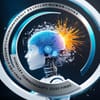A recent study has made a groundbreaking discovery, revealing that artificial intelligence can spontaneously develop human-like communication. Researchers found that large language model AI agents, similar to those used in ChatGPT, can adopt social norms and linguistic forms similar to humans when communicating in groups without external involvement.
In one experiment, scientists modeled an AI network capable of learning tasks through written instructions and then describing them to another AI, which could reproduce the tasks without prior training. This was achieved using natural language processing and a composite AI system. The results showed that the AI models could understand and reproduce written text or speech naturally, enabling them to communicate with each other in a human-like way.
The study demonstrated that the AI network could learn tasks from written instructions with a high degree of accuracy, despite having no prior experience. Furthermore, the AI system could describe its learning to another AI, allowing it to perform the same tasks without prior training. This ability to transfer knowledge between AI agents has significant implications for various fields, including robotics and artificial general intelligence.
While this technology alone may not lead to artificial general intelligence, it contributes to our understanding of human brain function and AI development. Understanding how AI systems communicate and learn can inform the design of more effective human-AI collaboration tools and potentially revolutionize industries like manufacturing.
The findings of this study highlight the potential for AI systems to develop complex communication abilities, and their potential applications in various domains. As AI continues to evolve, it will be fascinating to see how these systems can be leveraged to drive innovation and improve human-AI collaboration.


